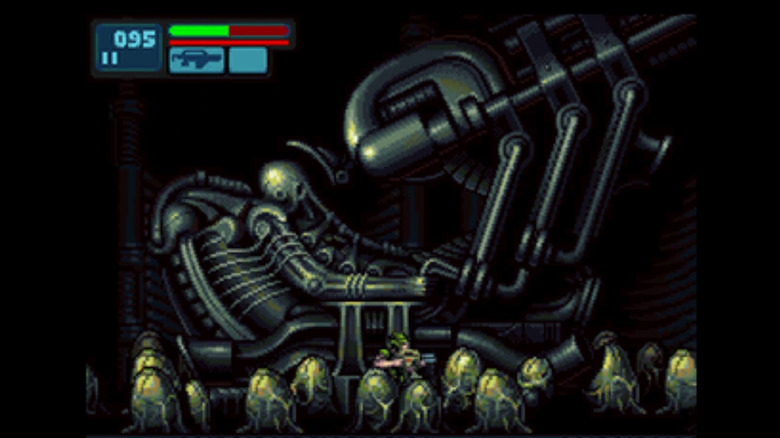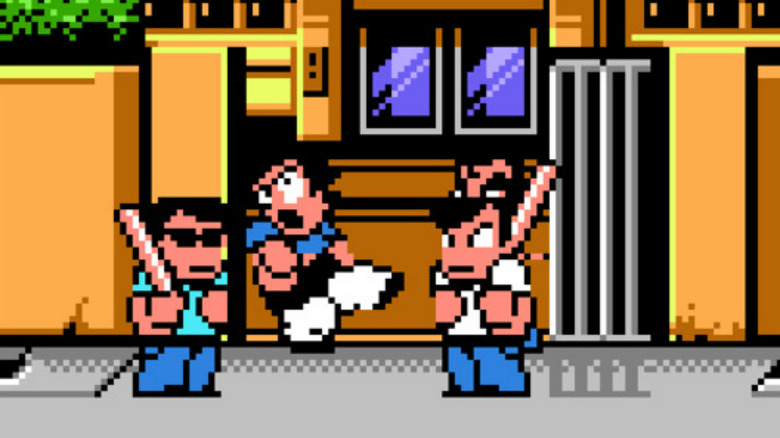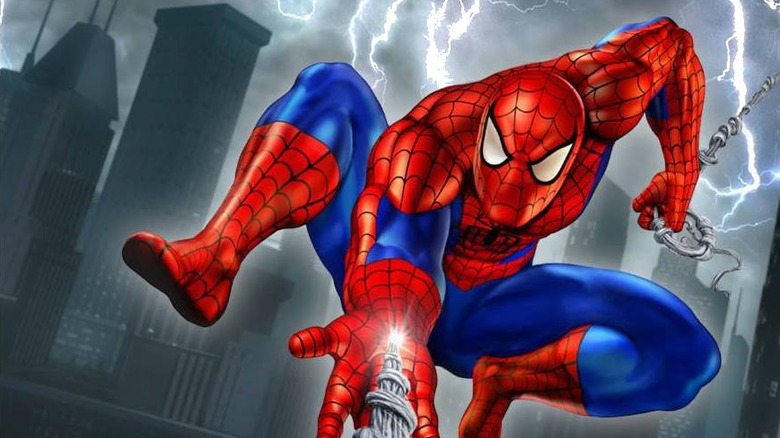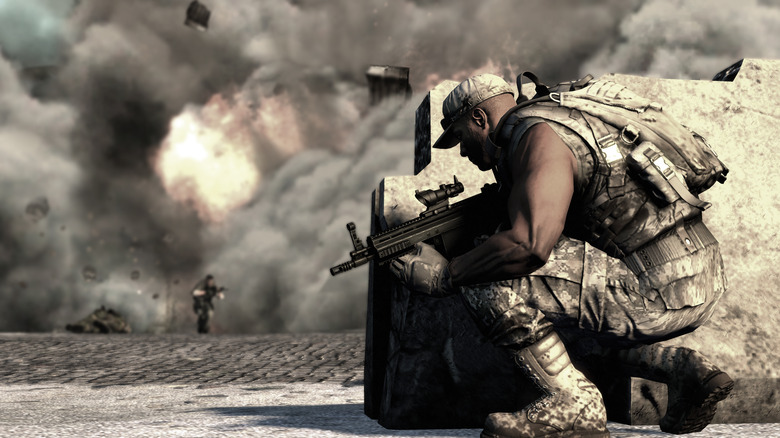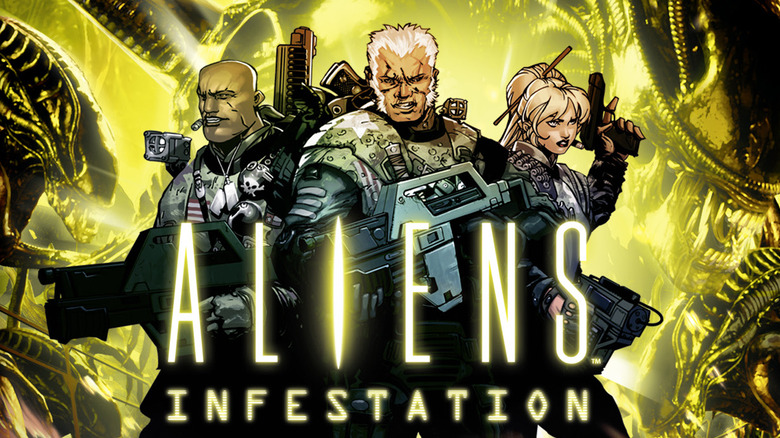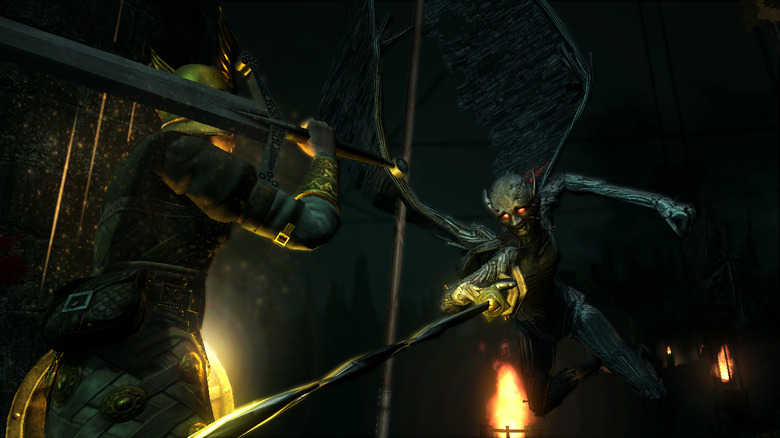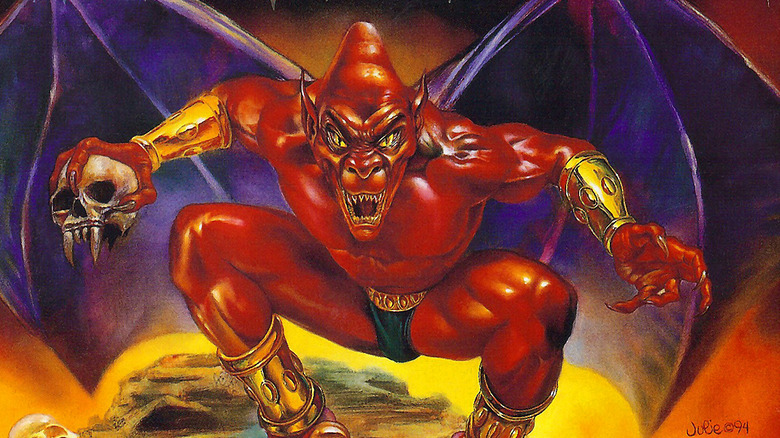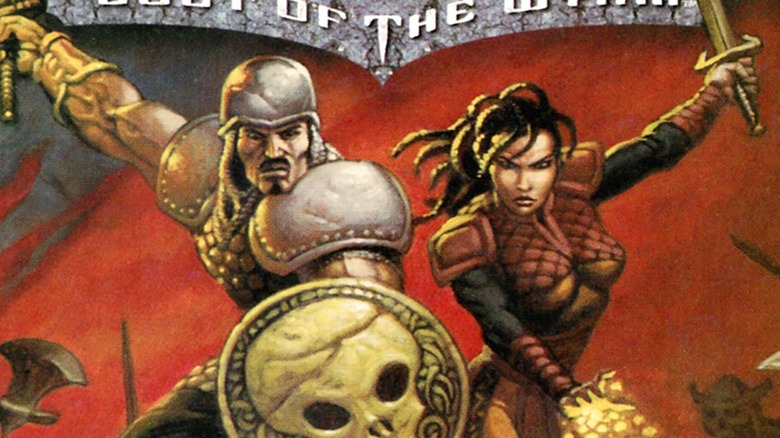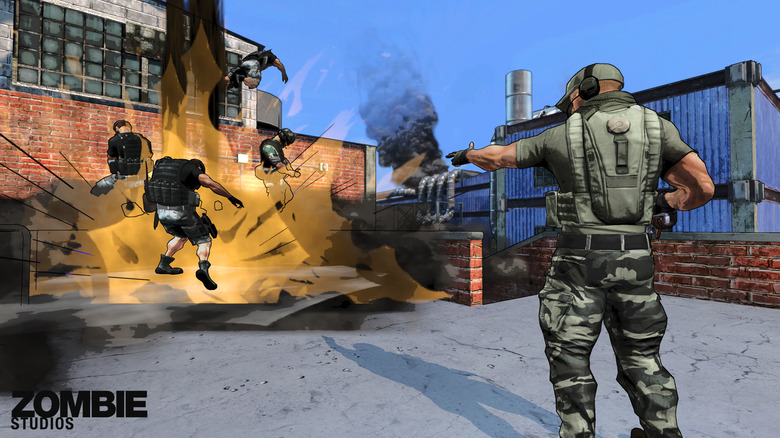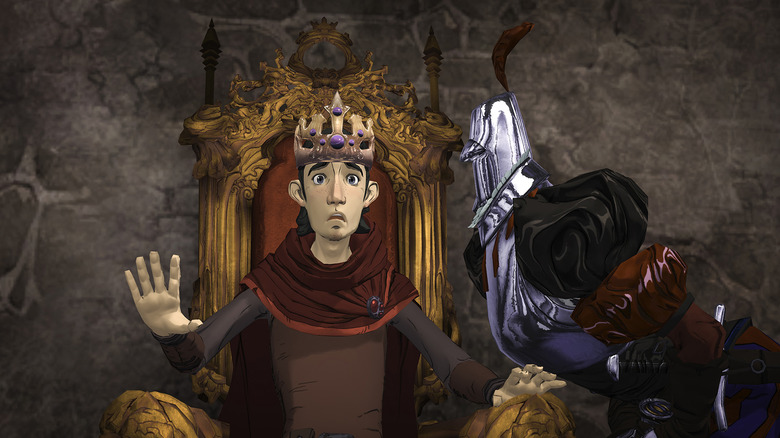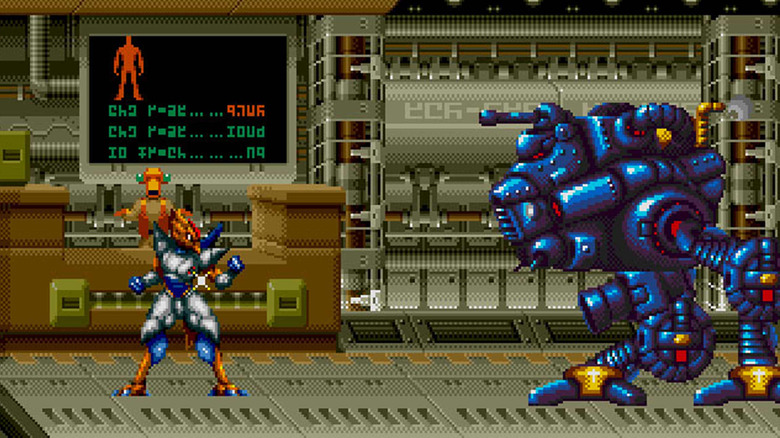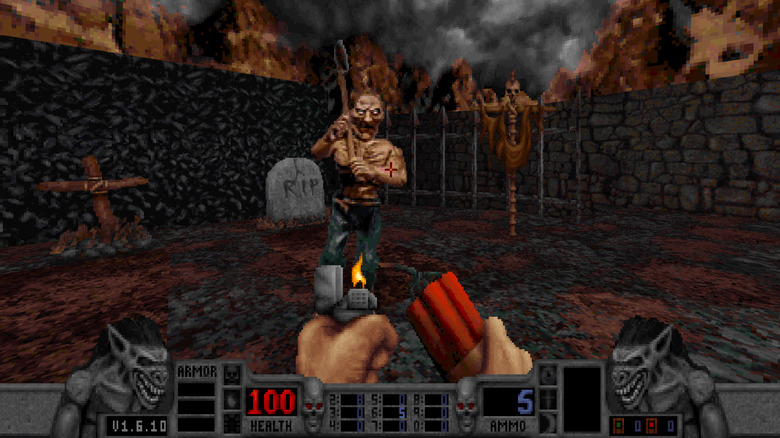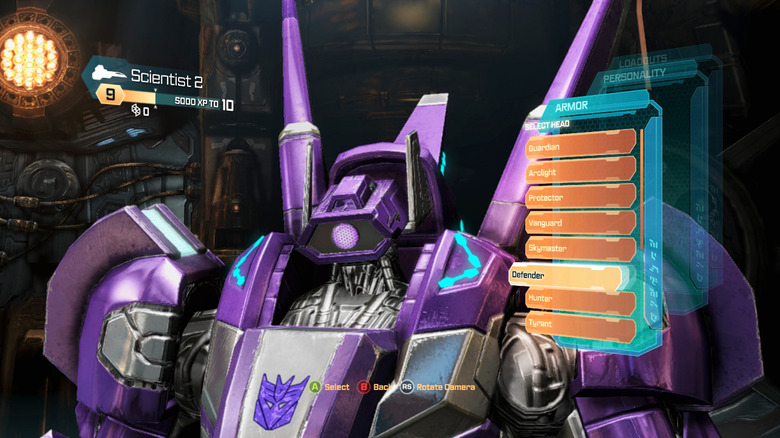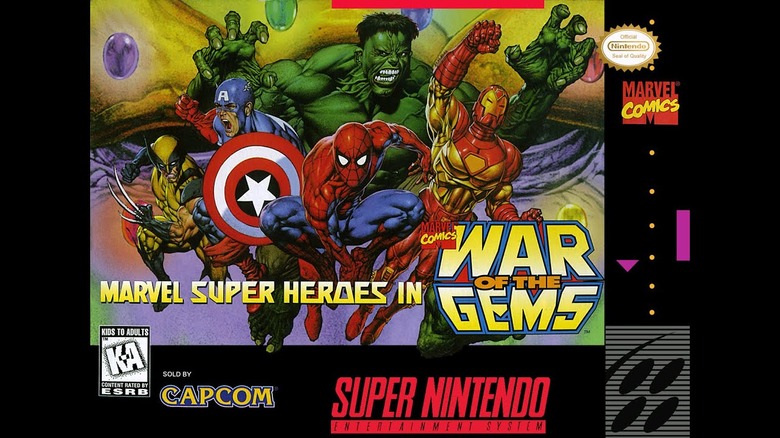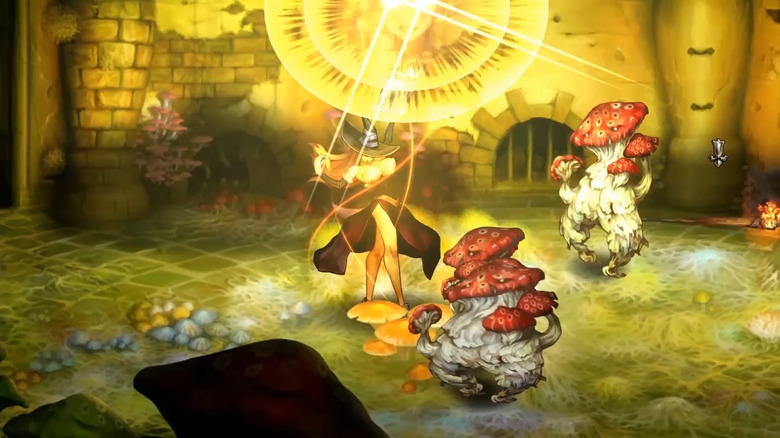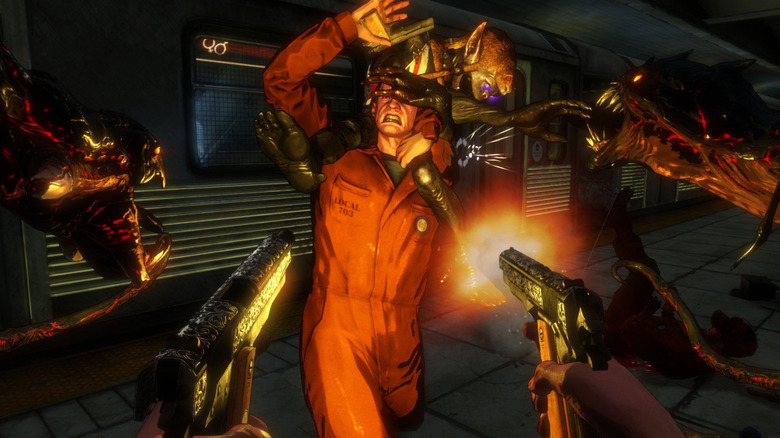The Most Overlooked Games Ever
Your favorite video game: did you find it, or did it find you? The story is likely a good one, loaded with fond moments and memorable details. Whether they come into our lives as the result of friendly recommendations, random discoveries, or premeditated purchases, the games we love the most seem to make the most lasting impressions.
Before the internet, word of mouth and magazines like Nintendo Power and Electronic Gaming Monthly were seemingly responsible for the life cycle of any particular game on the market. If you didn't hear about that cool new title from a friend or from the source, you usually didn't hear about it at all. And even with the Information Age upon us, the sheer amount of steady video game releases prevents some of the greats from ever finding their proper audience.
Let's face it: with or without the information superhighway at our fingertips, there have been a lot of games over the years that didn't get the normal amount of attention compared to other releases at the time. So we're shining a light on that unrealized potential by taking a look at our list of the most overlooked titles in video game history.
River City Ransom brought RPG strategy to the streets
Developer Technōs Japan brought a few popular titles to the NES back in the '80s and are probably best known for the co-op brawler Double Dragon. But fans and critics alike clamor for Technōs Japan's stylish Kunio-kun series, featuring the Double Dragon prototype Renegade, the fan-favorite 1v1 Super Dodge Ball, and River City Ransom: a nuanced beat-em-up with RPG elements that was astonishingly robust and totally ahead of its time.
Originally released in Japan as Downtown Nekketsu Monogatari during the spring of 1989, River City Ransom came to North American shores in 1990, followed by a European PAL release as Street Gangs in '91. But, despite the huge success of the Kunio-kun series at home, River City Ransom didn't perform quite as well in Western markets. The cult classic thrived among inner circles of hip NES enthusiasts, however, who adored the game's unique blend of frenetic action and upgradeable PCs along with its blistering hot soundtrack.
River City Ransom eventually found a home on virtual consoles and a larger, well-deserved following. As IGN puts it: "There are very few other co-op capable NES titles that are still this accessible and fun after all these years."
Spider-Man 2: Enter Electro swung under the radar
Spider-Man established the gold standard for 3D superhero action games when it hit the original PlayStation in 2000. It combined the incredible voice performances and likenesses from Fox's Spider-Man: The Animated Series with exceptional gameplay and a star-studded cast of villains. IGN claimed that it was "truly the best Spider-Man videogame that has ever graced a videogame system." One has to wonder why its 2001 sequel, Spider-Man 2: Enter Electro, didn't find the same frenzied fan base — especially considering the strides it took in terms of level design and complexity of animation.
A few factors contributed to the mixed reception of Enter Electro. First of all, the game was delayed to give developers enough time to scrub all references to the Twin Towers in the wake of the historic World Trade Center attacks. And fair critiques regarding the game's relatively short length didn't help.
But that didn't stop true believers from finding what some critics call "the best superhero game for the PSX." Deep cuts from Spidey's rogues' gallery, a few new gameplay tricks, and an array of killer performances from industry veterans Rino Romano, Dee Bradley Baker, and Daran Norris make Enter Electro a true unsung classic.
SOCOM 4 was a little late to the party
SOCOM 4: US Navy SEALs from Zipper Interactive and Sony Computer Entertainment was a cut above other third-person tactical shooters when it was released in 2011, but its relatively late arrival during the PlayStation 3 life-cycle doomed the game's infectious multiplayer to an early demise. SOCOM 4 is easily the best entry in a series that perfected the type of strategic stealth gameplay popularized by titles like Tom Clancy's Ghost Recon and Rainbow Six, featuring a hyper-realistic interpretation of military action.
Before the PS4 revamped their entire console platform, Sony's PlayStation Network struggled to keep up with the slick performance of Microsoft's Xbox Live when it came to simple things like party chat and multiplayer matchmaking. And as co-operative and competitive experiences on the Xbox 360 began to soar, PlayStation exclusives like SOCOM 4 began to suffer. The star that burns twice as bright burns half as long, and SOCOM 4 burned oh-so-brightly for the two good years its multiplayer servers were thriving. Diehard gamers can still dive in to take on some single-player missions, but nothing beats a heart-pounding session of Bomb Squad with a full team of seasoned PlayStation fans.
Aliens: Infestation was dragged down by franchise flops
A brutal platformer with Metroid and Castlevania sensibilities plus light RPG overtones, Aliens: Infestation is the little Xenomorph blaster that could. Developed for the Nintendo DS by WayForward Technologies and Gearbox Software, this sleeper hit made innovative use of the handheld console's eponymous dual screens, and captured a sense of tension and verisimilitude that had been all but missing from Aliens video game adaptations since the 1984 strategy/adventure adaptation of Ridley Scott's Alien from Argus Press Software for the Commodore 64 and ZX Spectrum.
Unfortunately, the release of Aliens: Infestation in 2011 was drastically overshadowed by the ongoing calamitous development of Aliens: Colonial Marines, the 2013 shooter from Gearbox that went horribly (and epically) wrong. While franchise fans were busy condemning Gearbox for their crimes against Weyland-Yutani, hardcore gamers were fiending for the hard-boiled action Infestation had to offer. 1UP went so far as to call it "the single best follow-up to James Cameron's Aliens since Mark Verheiden's black-and-white Dark Horse comics." An appropriate accolade, considering famed comic book artist Chris Bachalo's involvement with the cover and character design work. Aliens: Infestation remains one of the most timeless installments in the storied history of a beloved, and oft-besmirched, franchise.
Demon's Souls was ahead of its time
Although fans of FromSoftware's Dark Souls franchise look upon it with favor, Demon's Souls was a bit of an odd duck when it was released as an exclusive for the PS3 in 2009. Considered a spiritual successor to the King's Field series, this esoteric action-RPG took its cue from other FromSoftware releases along with a heavy amount of inspiration from sources like the grimdark worlds of Ian Livingstone & Steve Jackson's Fighting Fantasy gamebooks.
Demon's Souls was a smash hit in Japan, where fans enthusiastically soaked up its distinct brand of punishing difficulty and subversive roleplay. Publisher Atlus, however, undervalued the impact Demon's Souls would have in Western markets. As reported by Siliconera, Atlus initially planned to sell 75,000 copies of Demon's Souls in North America — but the game sold over three times that number. FromSoftware learned their lesson, however, and when their follow up Dark Souls was released on PS3 and Xbox 360, they made sure publisher Bandai Namco tripled their marketing efforts. Meanwhile, Demon's Souls went down in history as the abstruse progenitor of a genre-defining series of action-RPGs.
Demon's Crest offered players a monstrously good time
This side-scrolling platformer on the SNES from Japanese developer Capcom features all the gothic horror and medieval action of games like their fan-favorite Ghosts 'n Goblins franchise and Konami's Castlevania series, with one small twist: instead of simply slaying the monsters, you actually get to play as one. In Demon's Crest, players control Firebrand (the gargoyle antagonist from Ghosts 'n Goblins) in his third adventure, following Gargoyle's Quest 1 & 2 on the Game Boy and NES.
Like Ghosts 'n Goblins, Demon's Crest is a game that requires an elite level of tenacity and precision skills to beat. But unlike the rest of Capcom's action-adventure roster, the innovative Demon's Crest didn't quite have the momentum it needed to grab the public's attention when it was released in 1994.
Nintendo Life maintains: "It's hard not to find anything not to like about Demon's Crest, despite its difficulty ... It's fairly safe to say that if you loved the Ghosts 'n Goblins franchise, you're going to love this spin-off, and even if you're not a big fan, you may find that the added playability of Demon's Crest might be enough to make a fan out of you."
Draconus: Cult of the Wyrm brought the heat to Dreamcast
Like many Sega Dreamcast releases, this spiritual successor to Treyarch's Die by the Sword dwells on the verge of obscurity. When it was released in the summer of 2000 by publisher Crave Entertainment, Draconus: Cult of the Wyrm offered players a robust hack-and-slash adventure with layers of traditional RPG elements that helped it stand out from the competition.
IGN derided the game's "host of technical demons," but Gamespot called Draconus "simply fantastic," noting that "it's the kind of game that titles like Eidos' Deathtrap Dungeon and Universal's Xena: Warrior Princess should have been."
With phenomenal voice talent like David Anthony Pizzuto, George Takei, and the legendary Tony Jay to help the story unfold, Draconus: Cult of the Wyrm was technically and narratively a cut above similar titles of the era, and served as something of a progenitor for Treyarch's stellar work in the years to come on action titles like Spider-Man and their phenomenal run on Call of Duty.
Special Forces: Team X broke the mold
The squad-based shooter known as Special Forces: Team X came and went like a shadow in the night. This PC and Xbox Live Arcade title from Zombie Studios was an ambitious attempt to disrupt the status quo when it hit the market in 2013. STX allowed players to reshape the battlefield during gameplay and made good on its promise of "over 100 map variations" with a raucous cel-shaded splatterfest of blood and guts.
Special Forces: Team X delivered the goods with five frenetic game modes of asymmetric play between two-to-four teams, all for the low-low price of 15 bucks. It was loose, comical, and fun — the kind of irreverent team-based game that offered Team Fortress fans something a little meatier to sink their teeth into. But, despite STX's innovative use of terrain and Zombie Studios' unparalleled attention to gunplay details, the radical shooter never really caught on. And while it was lambasted by many critics at the time, some reviewers saw the light. Gaming Trend called STX's cel-shaded gameplay "a breath of fresh air" and maintains that the obscure shooter is "enjoyable for what it is, and it's fair to say that it doesn't try to be anything else than what it is: essentially only a multiplayer game. It's a fun one at that."
King's Quest (2015) is a story for the ages
For many gamers, King's Quest is a franchise that needs no introduction. Across nine installments throughout the '80s and '90s, this hallowed point-and-click adventure series wove together charming graphics and inventive narratives. But the series went dormant in the 21st century. Activision's Sierra Entertainment partnered with developer Odd Gentlemen to launch an episodic reimagining of the beloved saga in 2015. But, despite the reboot's superb cast and excellent, puzzle-driven narrative, it didn't catch the hearts and minds of the gaming public quite like the originals.
One might attribute this malaise to the new episodic presentation, a format popularized by Telltale Games with their critically acclaimed storytelling adventure games like Walking Dead and A Wolf Among Us. Perhaps an epic story like King's Quest was ill-served by being fragmented into five parts. Or perhaps other fantasy releases like The Witcher 3: Wild Hunt and Pillars of Eternity commanded the spotlight.
Destructoid called the 2015 King's Quest "a hallmark of excellence." In fact, reviewer Chris Carter claimed that he "never would have expected it to be this good, much less a serious Game of the Year contender." Word to the wise: explore this world of "whimsical characters, charming puzzles and perilous dangers" at your earliest convenience.
Alien Soldier is a low-key thrill ride
Japanese developers Treasure Co., Ltd. are perhaps best known for their hits like Wario World, Gunstar Heroes, and Mischief Makers. But back in 1995, towards the end of the life cycle of the Sega Mega Drive, Treasure released an obscure yet radical run-and-gun side-scroller called Alien Soldier that was way ahead of its time.
Long before the "git gud" culture surrounding Dark Souls was even a thing, releases like Alien Soldier were the real test of mettle among hardcore gamers. This difficulty and the accompanying learning curve are probably what kept gamers away from such a radical title. But Nintendo Life knows what's up, as they proffered in their retrospective review: "The graphics, and in particular the animation, are some of the best you will see on the Megadrive. All the characters are rich in detail and some of the bosses are huge. The music is excellent ... the on-screen action is sometimes hectic and yet there isn't even the slightest trace of slowdown." If you love edge-of-your-seat challenges and well-honed gameplay, Alien Soldier might just be the throwback thrill you've been looking for.
Blood was just a little too gruesome for '90s gamers
This distinct first-person shooter began life as a shareware release for the MS-DOS operating system in early 1997. Later that year, the full version of Blood was made available for PC gamers who enjoyed the FPS action of titles like Doom, Duke Nukem, and Shadow Warrior, but who wanted to see the latent horror elements of those games moved (all the way) to the forefront.
Instead of chainsaws, shotguns, and rocket launchers, Blood showcases the use of "crazy weapon types like a pitchfork, flare gun or a Voodoo doll" to tell its gruesome story of protagonist Caleb's unholy war against the big bad Tchernobog and his legion of monstrous and undead servants. Ultimately, Blood's trademark blend of dark humor and overtly graphic violence make it a must-play for gore hounds and horror enthusiasts.
As GameSpot puts it: "If you'd thought you'd seen it all, Blood might be just the jolt you need ... We've seen this stuff on a much more realistic level in films – but combined with the Satanic themes, it's definitely a reality check for a lot of PC game fans."
Transformers: Fall of Cybertron was beat by the Bayformers
Transformers: Fall of Cybertron is the robust sequel to Transformers: War for Cybertron, the critically acclaimed third-person shooter from Activision and High Moon Studios. This modern classic had everything when it was released in 2012, from a star-studded lineup of Generation One Transformers voiced by the best actors in the business, to breakneck multiplayer gameplay with razor-sharp mechanics at every twist and turn. But for all of its charm, Fall of Cybertron didn't quite make the impact it needed for longevity (or for its eagerly anticipated sequel to appear).
IGN called Fall of Cybertron "an entirely worthy successor no Optimus Prime fan should pass up," and Kotaku referred to Fall's new Escalation game mode as "a true bonding experience." But in the end, the Gen One glamour, epic narrative, and terrific gameplay of Fall of Cybertron weren't enough to spare this iteration of the franchise from the relentless assault of the Bayformers. Transformers: Rise of the Dark Spark — a 2014 movie tie-in with Michael Bay & Co.'s Transformers: Age of Extinction — served as a sequel of sorts to Fall of Cybertron and sullied High Moon's innovative approach to the franchise by merging the two series into one convoluted experience.
Marvel Super Heroes in War of the Gems is an unsung classic
Long before the MCU would make the Infinity Gauntlet a household name, Marvel was forging a few strategic alliances with Japanese developer Capcom. With X-Men: Children of the Atom and X-Men vs Street Fighter dominating arcades, Capcom was hard at work on a different release for the SNES: one that maintained their arcade sensibilities while delivering a more robust single-player experience. Marvel Super Heroes in War of the Gems presents an ambitious marriage of beat-em-up and fighting game mechanics. Yet, somehow, it's one of the most overlooked titles in Super Nintendo history.
War of the Gems took a roster of Marvel's finest heroes — including Captain America, Iron Man, Hulk, Spider-Man, and Wolverine — on an epic quest to gather the Infinity Gems in an effort to stop the evil Magus and his army of doppelgangers. One GameSpot user appropriately called War of the Gems "a thrill for comic fans and beat-em up game fans" while praising its "great looking 2D graphics" and "top-notch" gameplay. Unfortunately, War of the Gems hit the SNES towards the end of its life cycle in 1996, when players were moving on to consoles like the PlayStation, Sega Saturn, and Nintendo 64.
Dragon's Crown was overshadowed by its own art style
Dragon's Crown from Vanillaware follows in the bold footsteps of their other 2D side-scrolling action titles — like Odin Sphere and Muramasa: The Demon Blade — with a powerful combination of breathtaking art and intricate gameplay. A spiritual successor to classic RPG-inspired arcade beat-em-ups like Capcom's Dungeons & Dragons releases and Magic Sword, Dragon's Crown offers one to four players a quintessential dungeon crawling experience (be it local or online) with acute roleplaying overtones and an elaborately animated hand-drawn art style.
But, despite the elegance and depths of its mechanics and the exquisite quality of its art and animation, the original 2013 release was ultimately overshadowed by the controversy surrounding the hyper-sexuality of its characters: namely, the critical darling was under fire because of the exaggerated voluptuousness of its Sorceress PC.
Nevertheless, IGN praised Dragon's Crown's "astounding production values and addictive gameplay," and Kotaku called it "a beautiful game that's definitely worth exploring further." We couldn't agree more.
The Darkness 2 is a guilty pleasure with a heart of gold
The Darkness 2 from Digital Extremes and 2K Games was a special kind of superhero adaptation, which picks up two years after the events of the original 2007 release from Starbreeze Studios. It tells the story of mob lieutenant Jackie Estacado and the supernatural force known as The Darkness that holds sway over him. The Darkness 2 refined the original's "varying manifestations of the Darkness" with "Quad-Wielding Chaos" mechanics, an eye-catching "Graphic-Noir Style," and a four-player co-op campaign — not to mention the intensely personal story it managed to tell from the POV of a fan-favorite Top Cow comic book character.
PC Gamer called The Darkness 2 "three times as clever as it looks." So why did it fade into the background? Big franchise releases like Monolith's Gotham City Imposters and far-out imports like Asura's Wrath from Capcom were busy standing in the limelight. And, fundamentally, an independent comic book anti-hero as hyper-violent as Jackie Estacado struggled to find a wide audience. But eccentric and eclectic fans knew they had a real gem on their hands. As Eurogamer put it, The Darkness 2 is "a guilty pleasure worth tasting."

